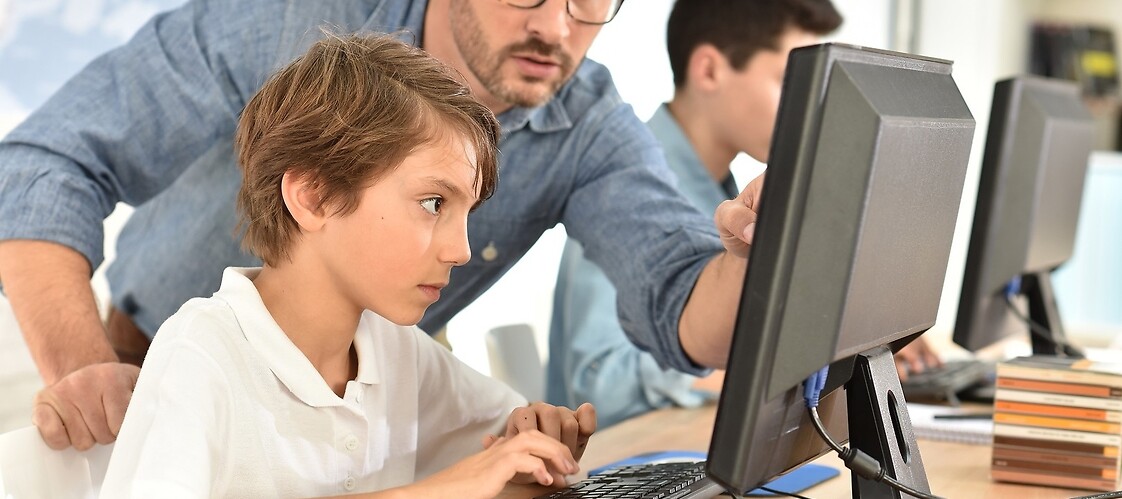
Consumer surveys of children, parents and teachers 2021
08 february 2022
Survey of children and parents
Children usually start using a mobile phone at age 7-8 (46.8%). Almost every child (97.7%) has a smartphone. Usually the phone was chosen by parents (51.7% children; 50.5% parents). First of all, it was the parents who decided on the mobile offer (79.1%). Similar to last year, nearly half of parents admitted to spending between 21 and 30 PLN (48.5%) on their children's phone use.
Additionally, nearly 57.8% of parents indicated that their children install applications on their phones themselves. A similar percentage of children indicated that they install apps for themselves (57.4%). About 41% of parents admit that their children know how to shop through mobile apps.
The most common age for children to start using the Internet is 7-8 years old (36.2%), slightly less common is 5-6 years old (27.6%). The vast majority of children (88.8%) use the Internet aside of online education.
62.3% of parents surveyed declare that they use parental controls in the context of their child's Internet use. The top 3 most common risks and dangerous behaviors that can result from their child's Internet use include: addiction, contact with strangers (the stranger may not be the person they claim to be), contact with inappropriate content such as pornography, violence, racism (38.2%, 37.8% and 37.4% respectively). Nearly 91% of parents have heard about the rules of safe Internet use.
Teacher survey
17.0% of teachers had conducted lessons remotely before March 2020. (before the introduction of this form in schools). Teachers tend to use their own computer/laptop during remote classes (83.4%), and 16.6% of respondents borrow equipment from the school/municipality. The vast majority of teachers conduct online lessons in the form of video chats using the platform/communicator (78.1%), much less give students assignments/materials for children to work on themselves (44.0%). 26.5% of respondents conduct webinars for the class/group, and 22.0% of teachers conduct individual consultations with students. All the mentioned forms of remote learning are used by 14.8% of the respondents. It is worth to mention that 28.2% of teachers admitted that remote form of teaching with students suits them.
Almost half of the teachers use instant messaging on a daily basis (47.5%). Every fifth respondent (20.0%) often or sometimes shares photos of their relatives in the Internet, 32.3% of teachers rarely do it, and almost half of the respondents (47.6%) never share photos of their relatives.
The surveyed teachers are aware of the social campaigns conducted by the Office of Electronic Communications. More than half of the respondents have heard of the "Click sensibly" campaign (67.2%) and the "J@ online" campaign (50,4%). Only a slightly smaller percentage of respondents also know the social campaign "Coding with UKE". (47,1%).
Use of telecommunications services during a pandemic
Nearly 53.2% of parents indicated that demand for telecommunications services increased during the pandemic. When considering the services that children used most frequently during the pandemic, the largest number of children (40.5%) and parents indicated (45.6%) were voice calls. Children indicated that the second most common activity was playing games (39.9%). Nearly 43.0% of parents indicated that gaming was one of the activities their children engaged in most often.
According to parents, the role of telecommunication services in their children's lives has changed somewhat. Nearly 75.4% indicated (sum of "definitely important" and "rather important") that telecommunication services were important in daily life before the pandemic. When asked about their role in children's lives during the pandemic, respondents indicated that they were important (86.4% - sum of "definitely important" and "rather important"). The pandemic period had little impact on the choice of Internet services by parents (14.6% for fixed Internet; 12.8% for mobile Internet).
We invite you to read the reports.


